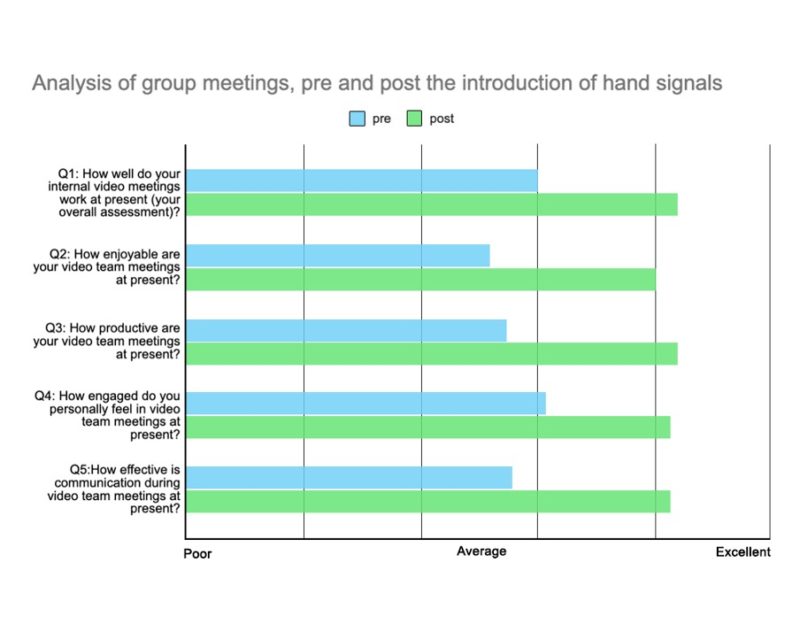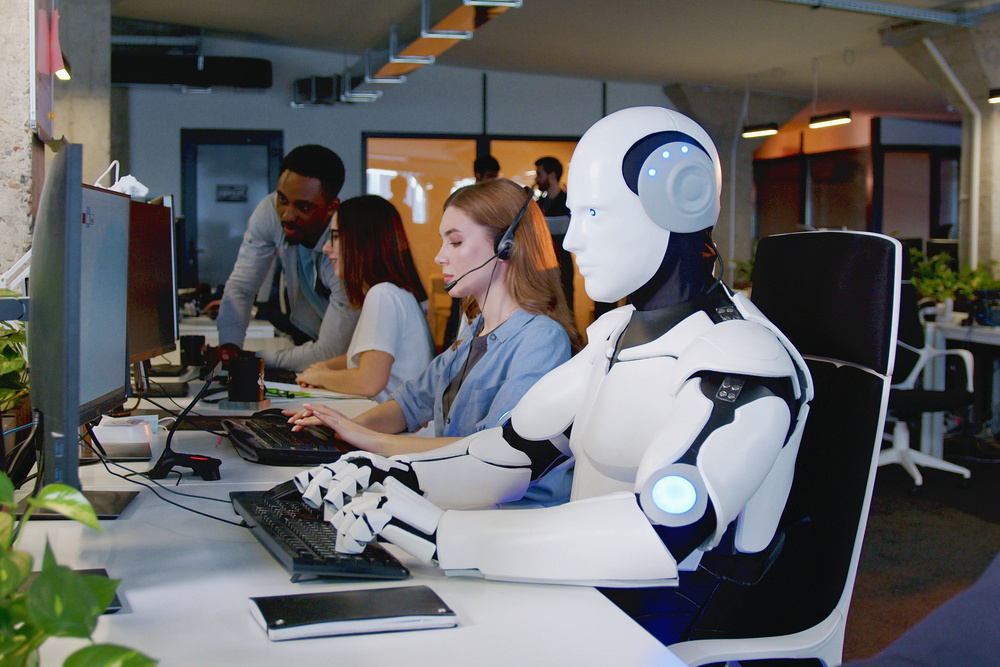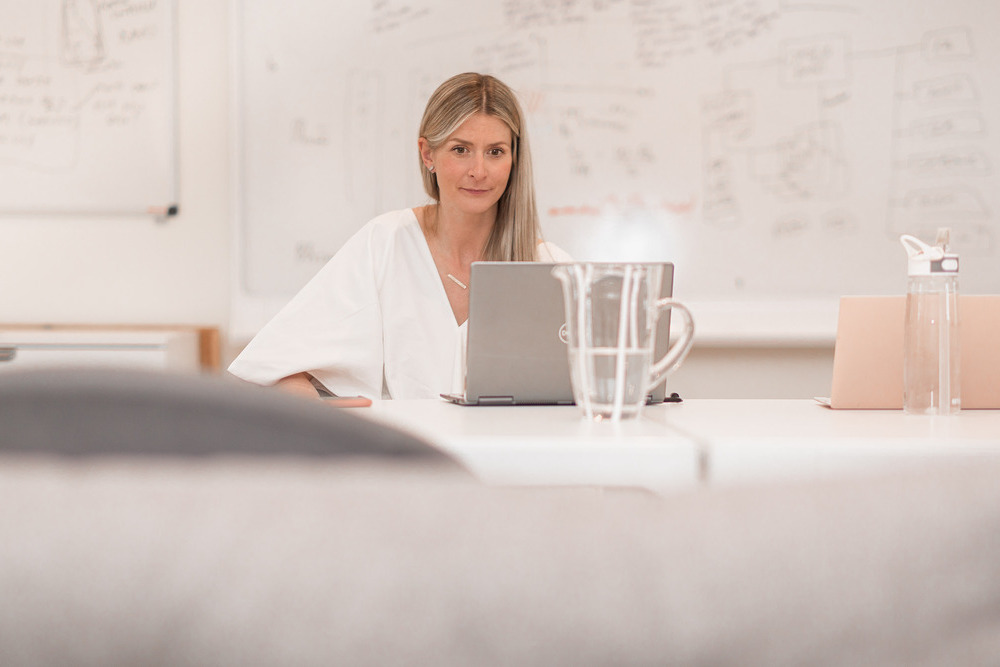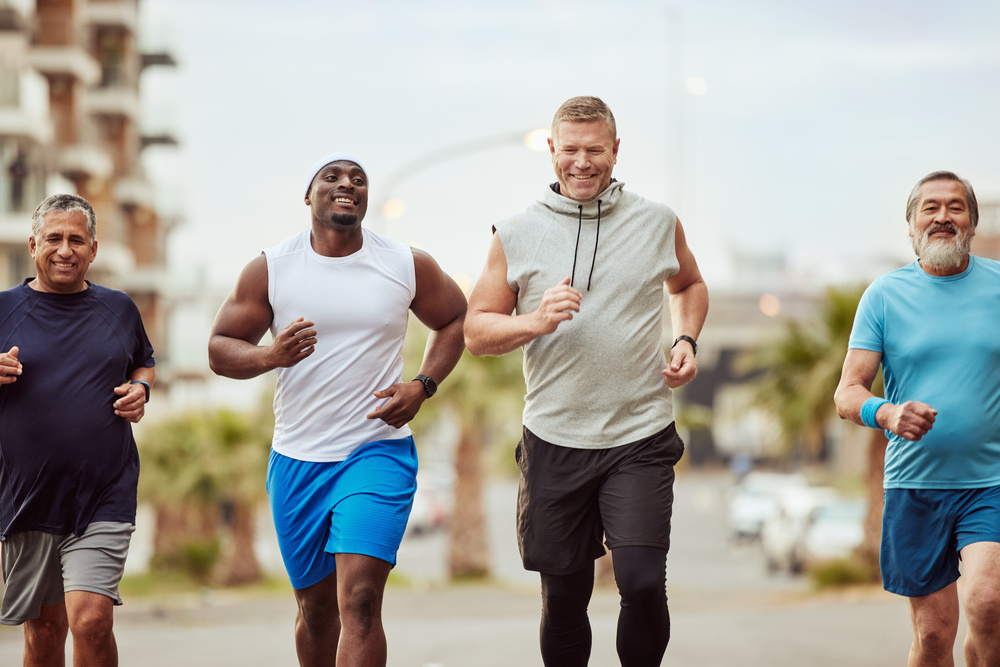The coronavirus (COVID-19) pandemic has caused a shift in how we work. Moving from office to home has meant the need for back-to-back video calls, some hours at a time. This is creating fatigue and has the potential to affect work performance, team relationships and worker wellbeing.
The Vicious Circle of Video Meetings
Paul Hills, the developer of the Video Meeting Signals (VMS) approach at the University College of London (UCL), decided to look into combating the problems many users experience with video meetings. He observed fatigue often resulted in a “vicious circle” of withdrawal.
“In many meetings, participants don’t get enough of a reaction from others, so they contribute less and become uninterested,” he explains. “They think others aren’t listening to them or are doing something else. So, they begin to multitask too, which magnifies the problem.”

Hills continues that workers often feel the need to multitask because they often feel trapped in a work approach that involves too many meetings and no time to keep up with emails or non-meeting work. “To make things worse, often meetings are not well lead, have poor agendas and overrun. All of this is exhausting, feels unsatisfactory and is not good for wellbeing. Then we take our stress to the next meeting.”
There hasn’t been any unified theory or “real” solution on how to tackle these issues, until now.
A Science-backed Solution
UCL recently undertook a randomised controlled trial that found an effective way to handle video call fatigue.
Professor Daniel Richardson, UCL Psychology & Language Sciences, says: “As we have all moved meetings, classes and social interactions online in the last year, many of us have found that it can’t replicate seeing people in-person and some have felt fatigued or isolated. While some people are trying to use more technology to improve video conferencing, we wanted to investigate a behavioural method and see if we could test it as rigorously as possible.”
The solution involves using hand signals alongside the spoken word and a technique of “passing” the conversation. This technique is further enhanced when combined with a conversation on the values and behaviours that the team wants to adopt for video meetings. There is an explicit focus on wellbeing and inclusivity.
These skills are already being used by a diverse range of organisations including AstraZeneca, Oxford Innovation and LexisNexis. They can transform video meetings making them more productive, more engaging and better for wellbeing.
In the UCL trial, groups that used the hand signals gave significantly higher ratings for group affiliation, personal experience and learning outcomes. The groups also said the mechanics of their group interactions were improved.
What Are The Main Hand Signals?
Using hand signals tackles head-on the key problem of getting no reaction from others. Hills’ initial idea and trials were inspired by his own use of hand signals in other environments. He also observed parents and children using baby signing. The key hand signals are below:

The signals allow everyone in a meeting to all communicate views and share emotions at the same time. A further technique, Team Chairing and Passing, uses hand signals to pass the conversation between people, avoiding silences or “you go, no you go” moments.
This often brings the additional benefit of sharing out the meeting time more evenly. It also allows the more introspective members to contribute. The overt use of hand signals helps create a virtuous circle of response/reward and engagement. This compares to a depressing cycle of little response from others followed by withdrawal and multitasking.
Do Companies Like Video Meeting Signals?
Many organisations are already experimenting with the use of hand signals in their meetings. Rosie Mackenzie, global head of leadership, management and team development, AstraZeneca is a fan: “We find that the video meeting signals provide a human connection that makes meetings feel very inclusive in a virtual world.”
Mark Smith, market development director, LexisNexis, is also very positive about the techniques: “Paul worked with a leadership team [here] to introduce the video signals approach to enhancing engagement and participation in virtual meetings.
“He took a high-performing team and improved meeting efficiency and communication while at the same time providing the opportunity to deepen relationships. Paul’s open and honest style and research-based methodology worked really well for us and I would recommend anyone considering the approach to give Paul a try.”
The techniques can make a huge difference to team meetings. The graph below shows the difference in team member views before and after just two one-hour sessions. The team had approximately 15 members who met monthly and were frustrated with their video meeting experiences.

What’s Next For Video Meeting Signals?
So far Konektis have worked alongside UCL and Exeter University on two experiments. The first experiment took place on 31st March 2021 and the second took place on 21st July 2021—the latter experience is currently in analysis.
Konektis is now inviting organisations to take place in experiment 3, which will look at team relationships, inclusivity and wellbeing. Involvement comes at no cost apart from time. The company says to expect teams and organisations to see benefits such as increased performance and engagement. Companies can also access VMS for free and try them out with their teams.











